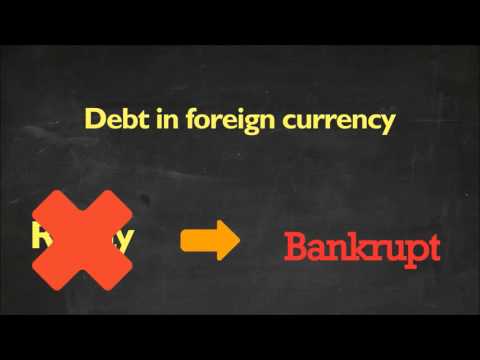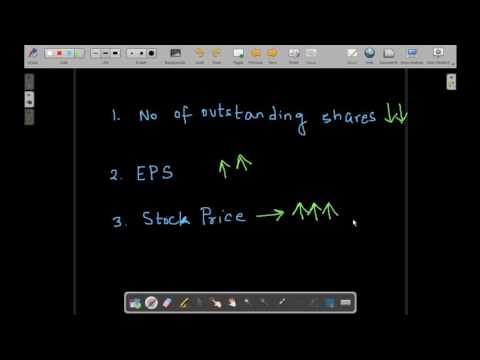The cost of debt

To calculate the cost of debt, first add up all debt, including loans, credit cards, etc. Next, use the interest rate to calculate the annual interest expense per item and add them up. Finally, divide total interest expense by total debt to get the cost of debt or effective interest rate.
- An increase in interest rates also increases the cost of debt, which makes it more expensive to fund projects within a business.
- For example, let’s say your friend offers you a $1,000 loan at 10% interest, and your company’s tax rate is 40%.
- Adam Hayes, Ph.D., CFA, is a financial writer with 15+ years Wall Street experience as a derivatives trader.
- One reason is that debt, such as a corporate bond, has fixed interest payments.
- Work on building your credit scores by paying your bills on time and improving your debt utilization.
Hence, the cost of debt is NOT the nominal interest rate, but rather the yield on the company’s long-term debt instruments. The nominal interest rate on debt is a historical figure, whereas the yield can be calculated on a current basis. 8% is our weighted average interest rate, or pre-tax total cost of debt. To calculate cost of debt before taxes, divide the total interest of all your loans by the total debt of all your loans.
Relevance and Uses of Cost of Debt Formula
Evaluating the cost of borrowed money allows a business to make informed decisions about financing its operations. When considering whether or not to take out a new loan, a business leader can calculate how it will impact the company’s overall cost of debt and whether it is worth the expense. But you don’t have to be a hedge fund manager or bank to calculate your company’s cost of debt.

Once the company has its total interest paid for the year, it divides this number by the total of all of its debt. To illustrate this concept, let’s say that Company X paid $10 million in interest last year. Over the past four quarters, the company’s debt obligations averaged $250 million.
Things for Small Business Owners to Celebrate this Mardi Gras
The analyst should avoid adding the country risk premium to the cost of equity if the risk-free rate used to estimate the cost of equity is the local country’s government bond rate. References cost of debt is same as its rate of interest to home and local countries in Table 18.2 refer to the acquirer’s and the target’s countries, respectively. The cost of debt represents the cost to the firm of borrowed funds.
You may have to estimate some of the figures above, since the debt your business carries throughout the year may fluctuate. This may be especially true if you have business lines of credit or business credit cards with revolving balances. Your overall debt figures may also experience some variations depending on whether you have fixed or variable interest rates. For the application of a loan, the company will have to pay a cost during a certain period, known as the interest rate . Likewise, if a company issues debt in order to finance itself, it will have to offer an attractive return to its investors to be able to place it in its entire issue.
Debt cost valuation
She writes about business and personal credit, financial strategies, loans, and credit cards. Because it tells you whether or not you’re spending too much on financing. It can also tell you whether taking on certain types of debt is a good idea when you calculate the tax cost.
Yellow Gest $142.5 Million Bankruptcy Loan From Apollo – Bloomberg
Yellow Gest $142.5 Million Bankruptcy Loan From Apollo.
Posted: Mon, 07 Aug 2023 22:13:22 GMT [source]
In our table, we have listed the two cash inflows and outflows from the perspective of the lender, since we’re calculating the YTM from their viewpoint. Provided with these figures, we can calculate the interest expense by dividing the annual coupon rate by two (to convert to a semi-annual rate) and then multiplying by the face value of the bond. The “effective annual yield” (EAY) could also be used (and could be argued to be more accurate), but the difference tends to be marginal and is very unlikely to have a material impact on the analysis. The diligence conducted by the lender used the most recent financial performance and credit metrics of the borrower as of that specific period (i.e. the past), as opposed to the current date. If the company were to attempt to raise debt in the credit markets right now, the pricing on the debt would most likely differ.
Why this matters for your small business
The rationale behind this calculation is based on the tax savings that the company receives from claiming its interest as a business expense. If your company is perceived as having a higher chance of defaulting on its debt, the lender will assign a higher interest rate to the loan, and thus the total cost of the debt will be higher. Others may want to know your company’s cost of debt figures, because it can help them assess the risk of doing business with your company. Cost of debt is the term that describes how companies repay the lenders and creditors from which they borrow money. Cost of debt is the effective interest rate a company pays to creditors—also known as debt holders or lenders. It is a tool that helps one know whether that loan is profitable for business as we can compare the cost of debt with income generated by loan amount in business.
Below is a closer look at the cost of debt formula for each option. If you’re unable to find better rates initially, work on improving your business credit score. To improve your credit score, open a business credit card, and avoid spending over 30% of your credit limit. WACC is important to understand when looking at cost of debt because this metric is rarely looked at in isolation. This financial metric is nearly always evaluated in conjunction with the cost of equity and WACC.
Building on the example above, let’s still assume that your business has an effective interest rate of 5.25%. Since tax rates vary for different businesses, for the sake of this exercise, let’s also just assume that your business is paying a 9% corporate tax rate. In the example above, the pre-tax cost of debt—also known as the effective interest rate—that your business is paying to service all of its debts throughout the year would equal 5.25%. To calculate the after-tax cost of debt, you need the effective interest rate, or the cost of debt calculated in the previous step, and the tax rate.

These capital providers need to be compensated for any risk exposure that comes with lending to a company. Let’s say you want to take out a loan that will allow you to write off $2,000 in interest for the year. If the cost of debt is less than that $2,000, the loan is a smart idea.
The measure can also give investors an idea of the company’s risk level compared to others because riskier companies generally have a higher cost of debt. Finally, to calculate the after-tax cost of debt, simply subtract the company’s marginal tax rate from one and then multiply the result by the effective tax rate you found earlier. The financial division generates a balance sheet and financial statements to review the cost of capital. The terms cost of debt and interest rates play an important role in measuring the cost of capital.
The cost of debt is the after-tax effective rate paid by a borrower on its debt. The cost of debt comprises a portion of the total cost of capital of a business, of which the other parts are the cost of preferred stock and the cost of equity. The cost of debt is the least expensive part of the cost of capital, since it is tax deductible. A business’s cost of debt is determined by the annual interest rate of the funding it borrows, or the total amount of interest a business will pay to borrow. Loan providers use metrics like the state of a company’s business finances and credit rating to come up with the interest rate they will charge a business. The higher a business’s credit score, the less risky they appear to lenders — and it’s easier for lenders to give lower interest rates to less risky borrowers.
Why The Fitch Downgrade Should Be A Wake-Up Call To Washington — Even If It’s Wrong – Forbes
Why The Fitch Downgrade Should Be A Wake-Up Call To Washington — Even If It’s Wrong.
Posted: Mon, 07 Aug 2023 18:00:27 GMT [source]
The after-tax cost of debt is high as income tax paid by the company will be low as the company has a loan on it, and the interesting part paid by the company will be deducted from taxable income. Hence, the cost of debt is crucial as it gives a chance to a company to save its tax. The company keeps in mind the rate of interest shown below when borrowing money for the issuance of a bond, as it has to give a fixed rate of interest to an investor who has invested in their company bonds. Ltd has taken a loan from a bank of $10 million for business expansion at a rate of interest of 8%, and the tax rate is 20%. The income tax paid by a business will be lower because the interest component of debt will be deducted from taxable income, whereas the dividends received by equity holders are not tax-deductible.
Interest rate is the percentage rate the bondholder charges on the principal for using his money. The interest rates changes as per the change in the market condition and the inflation rates, and Banks charge different interest rates for different types of loans. Below is an example of an after-tax cost of debt calculation to help you visualize how the process works. It is important to mention that commercial financing is excluded, including commercial creditors, commercial bills payable, and taxes accrued. The reason is because it usually has no cost, except when the established commercial deadline is breached.

If the stock does not have a β coefficient, and such is the case when a company is not listed, it is necessary to use the β of the comparables. This means that businesses tend to load up on debt when they need additional funding, rather than selling shares of their preferred stock or common stock. An increase in interest rates also increases the cost of debt, which makes it more expensive to fund projects within a business. This means that more marginal proposed projects are dropped, since it is no longer cost-effective to invest in them. Conversely, when the cost of debt declines, it is now cost-effective to invest in projects that have a reduced expected return on investment.
